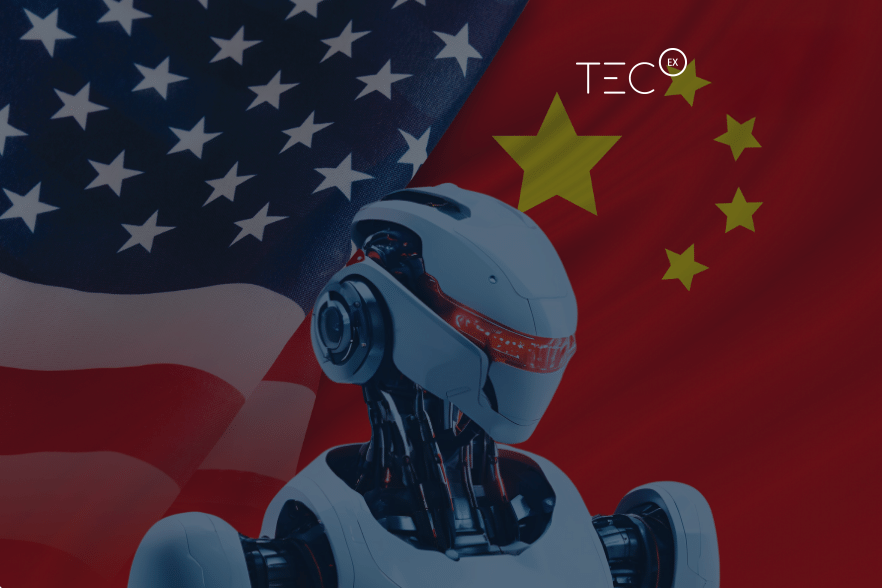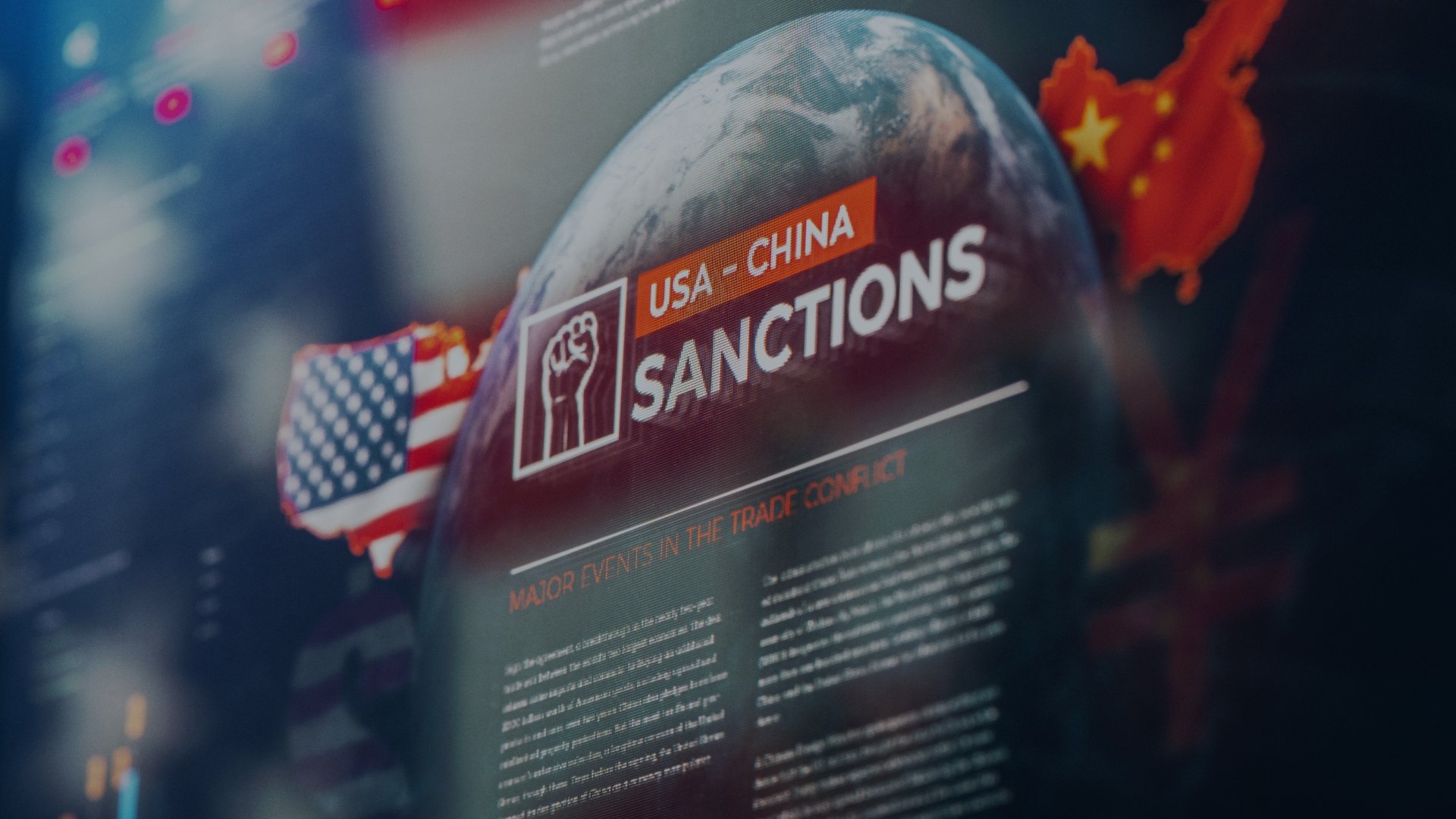The US-China trade war, a deep-rooted economic confrontation that began in 2018, has significantly disrupted the global economy. The tensions stem from long-simmering tensions between the two economic giants. The US is protective against China due to national security concerns, as well as concerns around intellectual property theft, limited market access for US companies, and a large trade deficit.
These concerns extend to the fast-growing field of AI, where both countries are investing heavily. The US fears China’s government subsidies and aggressive tactics could give it an unfair advantage in AI development, potentially leading to a dominant position in this critical technology. This growing rivalry sparked an “AI Cold War,” with both countries restricting access to cutting-edge research and technology.
While the Sino-US trade war has temporarily simmered down as the two countries have agreed on a truce until November 10, 2025, Chinese imports to the US face a significant 30% duty. But China has had time to minimize its reliance on US goods and services since Trump’s first term, and its unexpected reveal of DeepSeek AI suggests it could be a formidable force to be reckoned with. With a new national security concern from the Chinese Communist Party model, the AI Cold War will likely continue escalating.
Let’s delve into how the trade war hampered international collaboration in AI research and development and created uncertainty for businesses that relied on global supply chains for advanced tech components.
The AI Cold War: A New World Race
The emergence of the “AI cold war” characterizes a growing standoff between the United States and China. Unlike historical Cold War dynamics, this conflict centers on artificial intelligence (AI) technology. It describes a new Cold War paradigm that carries seismic global trade implications and disruptions.
The trajectory of the AI evolution hinges on the resolution of this East-West rivalry. Will the US and China navigate toward collaboration, ensuring the ethical advancement of AI, or will the world continue to witness a new age of geopolitical contention propelled by artificial intelligence?

What Does an AI Cold War Mean for Global Trade?
Yes, you can still import your AI tech goods.
The direction of the AI Cold War is uncertain, but while we don’t know what the outcome will be, we do know that the world of trade has to continue in spite of this. TecEx’s extensive understanding of global trade requirements, including Rules of Origin and compliance with customs authorities, allows us to safeguard your tech shipments throughout the entire import/export journey.
Now You Know
Know Your Rules of Origin
The murky rules of origin still leave many importers confused about tariffs, duties, and embargos, often finding themselves in unexpectedly expensive situations. The origin of a processed product, such as highly divisible technology, is often hard to determine and can lead to unforeseen import costs. Ultimately, the rules of origin stemming from the US-China trade war have left the tech industry, particularly, at the mercy of various customs authorities.
To assist with these technical import details, you will need to reach out to a compliance specialist. TecEx is your partner for tailor-made import solutions.
How Did We Get Here? | US-China Trade War Timeline
Tensions Culminate (2025)
During Biden’s final week in office, he released the “Export Control Framework for Artificial Intelligence (AI) Diffusion.” The framework threatened to place tight country-specific caps on the computation power of GPU exports. With immediate backlash from key US semiconductor manufacturers and exporters, the Trump administration rescinded it in May.
Trump came into office on January 20 determined to propel America’s AI leadership, and a whirlwind of events ensued:
- The Trump administration introduced the America First Trade Policy, which will shape the future of GPU trade with the US through export controls, tariffs, and trade agreements,
- Trump is removing hurdles for US AI developers with a new policy, “Removing Barriers To American Leadership In Artificial Intelligence,”
- He also announced a $500 billion private investment in domestic AI infrastructure, while industry leaders like OpenAI, Softbank, and Oracle pursue a joint venture called Stargate,
- A Chinese AI chatbot, DeepSeek, took the world by storm and sent shockwaves through the US stock market. Trump conceded that this development should be a “wake-up call” for US competitors, who must be “laser-focused on competing to win,”
- US tariffs on Chinese goods escalated to 145% during the trade war, while Chinese tariffs on US goods reached 125% – leading to a temporary truce for 90 days, which was then extended for an additional 90 days, while the two negotiate: US tariffs lowered to 30% and Chinese tariffs lowered to 10%, and
- US 10%-15% blanket tariffs, country-specific reciprocal tariffs, and the threat of up to 300% semiconductor duties, may push US chipmakers to move manufacturing sites from countries like Taiwan to the US, potentially reshaping supply chains while changing competitor and market share dynamics.
The AI Cold War has intensified the technological competition of the US-China trade war, as both countries continue racing to claim their position as the world’s AI leader. Whether the underestimated underdog or the self-assured top dog will triumph remains to be seen. We also await the results of the ongoing trade war negotiations – where the US likely hopes to move towards manufacturing and China to move towards consumption.
An Uncertain Path Forward (2024)
In 2024, the US-China trade relationship remained precarious. The Phase One agreement expired, and the future course of action was unclear. The Trump presidential campaign signaled a potential return to aggressive tariffs if re-elected.
The Biden administration, on the other hand, continued walking a tightrope, maintaining a firm stance on China’s trade practices while seeking areas for potential cooperation. The tense atmosphere indicated a continuation of this complex economic and political dance between the world’s two largest economies for years to come.
Other concerns left in the wake of the trade war included:
- Tariff Standoff: Despite the transition to the Biden administration, many tariffs initiated during the Trump era persisted on both US and Chinese goods. While the Biden administration extended certain tariff exclusions in May 2024, it also initiated investigations into China’s shipbuilding practices, leading the way for further tariffs to be imposed.
- Slow Decoupling: The trade relationship between the US and China had yet to fully rebound. Notably, US exports to China, particularly in sectors such as manufacturing and semiconductors, continue to fall short of anticipated levels. This trend suggested an ongoing process of gradual economic disengagement between the two nations.
- Tech Embargoes: The US adopted a more stringent stance on technology exports to China. This strategy was designed to impede China’s progress in high-tech industries and emerged as a fresh source of tension between the two countries. Circumventions like US chip smuggling to China and new Chinese AI competitors flourished by late 2024.
Renewed Tensions Brewing (2022)
- Aug: The US passed the CHIPS and Science Act to bolster domestic chip production and prevent semiconductor production in countries that the US considers as national security concerns.
- Oct: The US implemented stricter export controls on advanced chip technology headed to China.
Phase One Truce (2020)
- After a period of heightened tensions, a partial agreement was reached. China pledged to increase purchases of US agricultural products, energy, and manufactured goods in exchange for a rollback of some US tariffs. This agreement aimed to stabilize the situation but left many core issues unresolved, including intellectual property and industrial subsidies.
- The Phase One deal did little to thaw the underlying geopolitical and economic tensions. The US continued to express concerns about China’s technological ambitions and implemented stricter export controls on semiconductors and other critical technology. Additionally, the Biden administration restricted US investment in some Chinese high-tech sectors, citing national security risks
Tit-for-Tat Tariffs (2019)
- Aug: Washington announces the U.S. will add additional tariffs of 10% on 300 billion USD worth of Chinese goods. Washington delays duties on more than half of the 300 billion USD in imports until Dec. 15. Washington cites the holiday shopping season to explain the move. A large portion of the products will still be affected as of Sept. 1
- Aug: In response, Beijing says it will impose new tariffs on 75 billion USD in American goods and restart duties on U.S. automobiles. Furthermore, it threatens further duty hikes of between 5 and 10% that will take place over two rounds on Sept. 1 and Dec. 15.
- Oct: Washington announces the U.S. reached a deal with China. The agreement covers topics such as intellectual property, financial services, and agricultural purchases. The U.S. also commits to scrapping further tariffs set to take effect on Oct. 15. However, disagreements quickly break out over tariff relief, and both sides fail to ink the deal for months. The U.S. Commerce Department puts 28 Chinese companies on its “entity list,” which further adds to the complexity of rules of origin trade around the world.
- Dec: Both sides announce they have reached a trade agreement. As part of the transaction, the U.S. agrees to cancel the Dec. 15 tariffs and cut other duties in half, while China states it will buy more U.S. agricultural goods.
Where It All Started (2018)
- Jan-Mar: To make his mark on American Industry, former President Trump began a campaign intended to address the country’s growing trade deficit. As a first order, Washington imposed several tariffs over three months, starting with solar cells and washing machines, and ending with 25% tariffs on steel and a 10% tariff on aluminum. While neither action was directly aimed at China, it’s widely believed that these were the first moves against the competing superpower.
- Apr: China fires back in response to the steel and aluminum duties with about 3 Billion USD worth of tariffs on U.S. goods targeting 128 products.
- In response, America makes its first openly China-centric move and bans selected Chinese corporations from buying U.S. technology. The U.S administration also imposes fines for doing business with North Korea and Iran (link).
- Jun: The USA implements a 25% tariff on 50 billion USD in Chinese goods. Motivation for this move is given as China’s alleged theft of intellectual property and technology and its other unfair trade practices. Beijing quickly retaliates by announcing tariffs on 50 billion USD in American products.
- Sep: Washington announces 10% tariffs on 200 billion USD in Chinese goods, with a plan to hike the rate to 25% at the start of 2019. Former President Trump then threatens additional tariffs on 267 billion USD in Chinese products if Beijing retaliates. China does retaliate, saying it will add tariffs on 60 billion USD in U.S. products as a response to the latest U.S. duties.
- Dec: Trump and Xi meet at the G-20 summit in Argentina. The U.S. has decided to delay a planned increase in tariff rates on Chinese goods from 10% to 25%. Both parties commit to negotiating a trade deal within 90 days.

Caught in the Trade War Crossfire
Because world trade doesn’t happen in a vacuum, the trade war has consequently hindered the intricate web of the global supply chain with tariffs and duties. This has led to price inflation and other economies being pressured to fill the gap.
Major Countries Impacted by The US-China Trade War
The US-China trade war reverberated throughout the global tech industry, extending its effects far beyond the two players. East Asian tech hubs like Taiwan and South Korea encountered investment hesitancy amid trade uncertainty, while Vietnam experienced a surge in demand but struggled with infrastructure limitations. Japan faced intensified competition, prompting innovation efforts, and the European Union, though not directly involved, felt the repercussions of heightened tensions, contributing to an atmosphere of global trade unpredictability affecting its tech sector. Let’s take a closer look at some winners and losers.
The Winners
The trade war hasn’t been all bad news. Rather than simply paying higher prices for taxed resources, new markets emerge worldwide as China and America seek more competitively priced products. Places such as Brazil, Taiwan, and parts of Europe became more significant suppliers of items affected by the trade war.
Export Powerhouses:
Countries like Vietnam, Thailand, Mexico, and South Korea saw their exports surge. Companies began searching for alternatives as the US and China slapped tariffs on each other’s goods. These nations, with their established manufacturing bases and lower production costs, were perfectly positioned to fill the gap.
They ramped up production of electronics and machinery, becoming go-to suppliers for these in-demand items.
Shifting Strategies:
Some countries, like Taiwan, a major player in the global semiconductor industry, strategically positioned themselves to benefit from the tensions. The US, wary of its dependence on Chinese chipmakers, looked to bolster its domestic semiconductor production. Taiwanese companies received significant investments and formed partnerships with US firms, strengthening their position in the global tech supply chain.
Unfortunately, Taiwan also suffered some losses, and the future of this trade relationship is uncertain as Trump strives to increase domestic production of American GPUs to promote US AI leadership.
The Losers
However, the renewed demand has also increased strain on new markets, with insufficient infrastructure to meet global needs and new order flows. This results in worldwide product shortages. Notable is the shortage of microchips spurred on by drought in Taiwan and encouraged by the U.S., which barred China from accessing vital technologies needed to start producing its own microchips.
Disrupted Supply Chains & Higher Prices:
While the US and China aim to hurt each other’s economies, both end up grappling with unintended consequences.
The back-and-forth tariffs disrupt established supply chains, causing delays and raising costs for businesses.
This burden often trickles down to consumers who face higher prices for various goods. American farmers, particularly soybean producers, were hit hard as China turned to other sources.
Collateral Damage:
The trade war also had negative effects on some bystander countries that were not directly involved in the dispute. These countries found themselves caught in the crossfire. For instance, Ukraine is a major exporter of wheat and corn, products that are often used together with soybeans in animal feed.
When China reduced its imports of US soybeans because of the tariffs, the demand for Ukrainian grains also fell, causing economic hardship for Ukrainian farmers. Colombia faced a similar situation. The South American nation is a major producer of coffee, a product that is frequently consumed alongside sugary treats like chocolate. When the tariffs caused Chinese consumers to cut back on US chocolate imports, the demand for Colombian coffee also dipped.
Where Does the AI Trade War Leave Us?
The US-China trade war’s impact on global trade is complex and multifaceted. While some countries like Vietnam and Mexico have seen their exports boom as companies sought to diversify their supply chains, others like the US and China themselves have experienced disruptions and economic slowdowns. The trade war also created opportunities for new trade partnerships to form, such as the increased collaboration between Taiwan and the US in semiconductor manufacturing. However, these shifts came at a cost. The uncertainty caused by the trade war has been causing unstable business confidence and investment, leading to slowdowns in global trade growth.
Overall, the US-China trade war has continuously highlighted the global economy’s interconnectedness and the potential for trade disputes to cause widespread economic damage. With the AI Cold War intensifying, President Trump’s ongoing global trade war, and a temporary truce with no certain outcome, the true ramifications of this feud are likely to be felt for decades to come.



